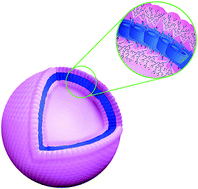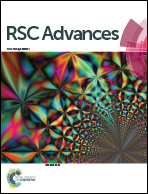Synthesis of calixarene–polyglycerol conjugates and their self-assembly toward nano and microtubes†
Abstract
Amphiphilic hyperbranched polymers and copolymers consisting of polyglycerol, polycitric acid and a p-sulfonatocalix[4]arene core (HPCs) were synthesized and characterized. Depending on the composition of AHPs, their self-assembly in aqueous solution led to different nano and microtubes with the ability of encapsulation of anticancer drugs such as curcumin.


 Please wait while we load your content...
Please wait while we load your content...